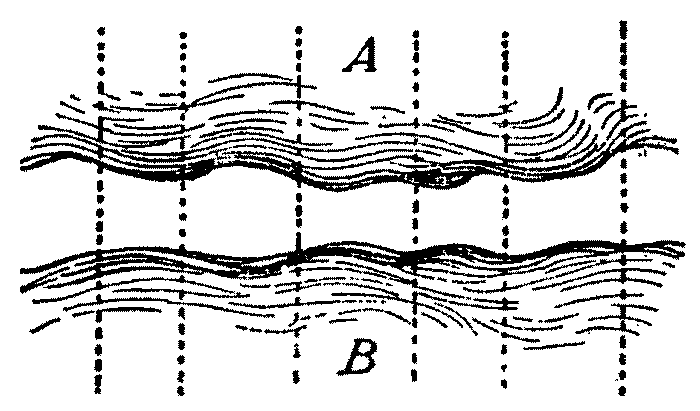[ORIGINALLY POSTED ON SEPTEMBER 3, 2023]
I would probably not have gone to see Barbie (the movie) if I had not read so much about it over the past few weeks. So, here is another take, including a take on the takes.
In brief, I was entertained by what might have been intended, by movie makers, their financiers, and above all Mattel as a little bit of fluff that would make careers and money. I knew that this was not a movie for most of my sections (the list would be long)—except perhaps for one: after all I am an anthropologist of America and this movie is an event in the history of the United States, a performance that triggered many other performances (particularly by my peers in the American intelligentsia). So, in the spirit of ethnography I will first focus on aspects of the film as object, and then ponder about what future anthropologists might do with this total social fact.
The movie, it turns out, is not just fluff, It can also be “read” (watched and then written about) very seriously (if not ponderously). So, in an initial step, in the theater, and given all I had already read, I listened for all explicit tropes for “feminism” including mentions of “patriarchy,” put downs of Ken and all other men, etc. These are hard to miss and yet I noticed, as a few of the commentators did, that many of the enactments of the tropes are so heavily drawn to make one wonder whether they were designed as caricatures. I’d say that only the speech by the one “real” woman in the movie is straight faced 21st century official feminism. Everything else could serve as opening the way to a critique of said “feminism.”
 The movie opens with an hyperbolic animation of a young girl’s play fantasy (and/or a Mattel commercial) as it might be remembered, nostalgically, by adult women—unless it is a an animation of the critique of Mattel’s designs for and unto little girls. Barbie Land appears as a pink Eden (Shangri-La) as the designers imagined, with a lot of supporting evidence, little girls imagine as they play with dolls their parents/grand parents paid for. This is land from which boys (as well as parents) are banned, a land without pain … or sex (we are explicitly told that neither Barbie nor Ken have genitalia), or digestive tracks (Barbie Land would not have to worry about sewers!).
The movie opens with an hyperbolic animation of a young girl’s play fantasy (and/or a Mattel commercial) as it might be remembered, nostalgically, by adult women—unless it is a an animation of the critique of Mattel’s designs for and unto little girls. Barbie Land appears as a pink Eden (Shangri-La) as the designers imagined, with a lot of supporting evidence, little girls imagine as they play with dolls their parents/grand parents paid for. This is land from which boys (as well as parents) are banned, a land without pain … or sex (we are explicitly told that neither Barbie nor Ken have genitalia), or digestive tracks (Barbie Land would not have to worry about sewers!).
That is the setting. And then something happens: A thought startles Barbie (little girls turning into adult women?): death. This may be (or could have been a point) when light comedy entered drama. I suspect that, in many conversations about the movie, in cars driving home in various suburbs, this came up (ethnography needed!). In the movie, death was lightened by adding cellulite and flat feet as the triggers for Barbie’s exploration of the “real” world that ends with her first trip to a gynecologist (treated as a celebration!). In other words, this may be less a movie about feminism than about growing up female (person with female genitalia): it is about a young girl’s shift from a massively gendered fantasy into the material world—including the material world of mothers with boring jobs, unpleasant bosses, and another of the “big eastern syndicates” which ruin Christmas (as per Lucy in Peanuts)—not to mention sex (which is actually quite absent from the movie). It may be part of Mattel’s capitalistic genius, as a 21st century corporation that it lets itself be represented by buffoons while racking in the dollars. I’d bet there will be a Marxicist take on this movie…
And then setting and adventure (getting arrested in Los Angeles, crashing Mattel) turn into myth. The movie includes a set of scenes with the Creator (not only of Barbie, but also of Mattel–though we are not told that). These culminate with a vision in which She who Is gives Barbie glimpses of what it might be like to live in a world in which one dies—and with the punch line Jews, Christians and Muslims, not to mention Americans, will recognize: it’s your choice (free will). In that world there are many happy children smiling at you (I need to watch the movie again to see this altogether brief sequence). And no mention that, as another story of a woman’s move out from Eden put it, “in sorrow thou shalt bring forth children; and thy desire shall be to thy husband, and he shall rule over thee” (Genesis 3:16). In other word, Barbie is very much an
American movie in the evolving liberal humanist ideology that imagines a future world of pleasure and community where every individual can be all they want to be.
But all this is not to be taken as implying I argue that the movie is a product of America (feminism, post-Christianity, capitalistic exploitation, or what have you), or that it is part of a grand systemic plot to “enculture” (“socialize”) young girls, or their mothers (not to mention boys and men).
Rather, and from the point of view of my kind of anthropology, such movies, like all works of imagination (even when greatly enriching stock holders), are statements within ongoing and ever evolving conversations that triggers further statements—particularly statements made by those who cannot be directly controlled at the time when they are discussing the original statements. I
imagine that most people who went to see the movie then talked about it not only with other who saw it, but also with peers, family members, friends, etc. who did not. And this makes me wonder what little girls do/did when playing with Barbie: do they wish they had breasts like hers? notice that these breasts have fascinated all critics of the doll? “criticize” (the way many older girls and women eventually do)? What do they tell each other they are doing? their parents? What do their parents tell them? I hope some anthropologist will take these questions as triggers for investigation. I am sure that one would find many cases (in notes, letters, social media posts) of something I just found out a young girl who would become very famous wrote for her siblings’ enjoyment: For 6 years, from the time she was 12, Jane Austen sketched 21 novels (2017) before composing the famous 6 for which she is famous. These “teenage writings” (like the Bronte sisters’) may have survived because of the eventual fame of their authors, but they could also be taken as evidence for what young people do with the stuff of their every day life in their social conditions, and particularly what they mock (implying that they already knew what these were, and how to mock them). Such texts (performances) should be the sources of any ethnography of the Barbie phenomenon in the United States and beyond.
References
Austen, Jane 2017 Teenage writings. Oxford University Press
 Print This Post
Print This Post
 I had always dismissed the easy and common critique for the apparent mentalism of the explanatopry paragraph. I always took all this as a model drawn to make us think (…), rather than as the description of a state of being or of some substance. Still, one cannot take Saussure literally when he writes:
I had always dismissed the easy and common critique for the apparent mentalism of the explanatopry paragraph. I always took all this as a model drawn to make us think (…), rather than as the description of a state of being or of some substance. Still, one cannot take Saussure literally when he writes: